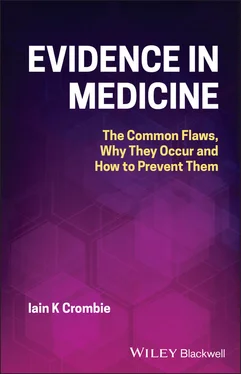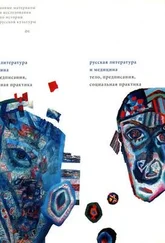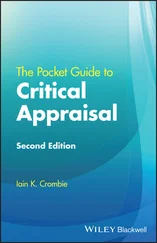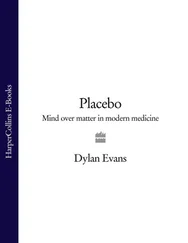31 31. Boylston, A.W. (2002). Clinical investigation of smallpox in 1767. N. Engl. J. Med. 346: 1326–1328.
32 32. Boylston, A. (2014). William Watson's use of controlled clinical experiments in 1767. J. R. Soc. Med. 107: 246–248.
33 33. Donaldson, I.M. (2016). Van Helmont's proposal for a randomised comparison of treating fevers with or without bloodletting and purging. J. R. Coll. Physicians Edinb. 46: 206–213.
34 34. Chalmers, I. and Toth, B. (2009). Nineteenth‐century controlled trials to test whether belladonna prevents scarlet fever. J. R. Soc. Med. 102: 549–550.
35 35. Hrobjartsson, A., Gotzsche, P.C., and Gluud, C. (1998). The controlled clinical trial turns 100 years: Fibiger's trial of serum treatment of diphtheria. BMJ 317: 1243–1245.
36 36. Podolsky, S.H. (2009). Jesse Bullowa, specific treatment for pneumonia, and the development of the controlled clinical trial. J. R. Soc. Med. 102: 203–207.
37 37. MRC (1934). The serum treatment of lobar pneumonia: a report of the therapeutic trials Committee of the Medical Research Council. BMJ 1: 241–245.
38 38. Lorriman, G. and Martin, W.J. (1950). Trial of antistin in the common cold. BMJ 2: 430–431.
39 39. MRC (2004). Clinical trial of patulin in the common cold. 1944. Int. J. Epidemiol. 33: 243–246.
40 40. Hill, A.B. (1990). Suspended judgment. Memories of the British streptomycin trial in tuberculosis. The first randomized clinical trial. Control. Clin. Trials 11: 77–79.
41 41. MRC (1951). Prevention of whooping‐cough by vaccination; a Medical Research Council investigation. BMJ 1: 1463–1471.
42 42. MRC (1948). Streptomycin treatment of pulmonary tuberculosis. BMJ 2: 769–782.
43 43. MRC (1950). Clinical trials of antihistaminic drugs in the prevention and treatment of the common cold; report by a special committee of the Medical Research Council. BMJ 2: 425–429.
44 44. Editorial (1948). The controlled therapeutic trial. BMJ 2: 791–792.
45 45. MRC (1950). Treatment of pulmonary tuberculosis with streptomycin and Para‐aminosalicylic acid; a Medical Research Council investigation. BMJ 2: 1073–1085.
46 46. Murray, J.F., Schraufnagel, D.E., and Hopewell, P.C. (2015). Treatment of tuberculosis. A historical perspective. Ann. Am. Thorac. Soc. 12: 1749–1759.
47 47. Lanska, D.J. and Lanska, J.T. (2007). Franz Anton Mesmer and the rise and fall of animal magnetism: dramatic cures, controversy, and ultimately a triumph for the scientific method. In: Brain, Mind and Medicine: Essays in Eighteenth‐Century Neuroscience (eds. H. Whitaker, C.U.M. Smith and S. Finger), 301–320. New York: Springer https://doi.org/10.1007/978‐0‐387‐70967‐3.
48 48. Donaldson, I.M. (2005). Mesmer's 1780 proposal for a controlled trial to test his method of treatment using “animal magnetism”. J. R. Soc. Med. 98: 572–575.
49 49. Dimond, E.G., Kittle, C.F., and Crockett, J.E. (1960). Comparison of internal mammary artery ligation and sham operation for angina pectoris. Am. J. Cardiol. 5: 483–486.
50 50. Cobb, L.A., Thomas, G.I., Dillard, D.H. et al. (1959). An evaluation of internal‐mammary‐artery ligation by a double‐blind technic. N. Engl. J. Med. 260: 1115–1118.
51 51. Enck, P., Bingel, U., Schedlowski, M. et al. (2013). The placebo response in medicine: minimize, maximize or personalize? Nat. Rev. Drug Discov. 12: 191–204.
52 52. Horing, B., Weimer, K., Muth, E.R. et al. (2014). Prediction of placebo responses: a systematic review of the literature. Front. Psychol. https://doi.org/10.3389/fpsyg.2014.01079.
53 53. Passamani, E. (1991). Clinical trials – are they ethical? N. Engl. J. Med. 324: 1589–1592.
54 54. Schimmel, E.M. (1963). The physician as pathogen. J. Chronic Dis. 16: 1–4.
55 55. Beeson, P.B. (1980). Changes in medical therapy during the past half century. Medicine 59: 79–99.
56 56. Mafi, J.N. and Parchman, M. (2018). Low‐value care: an intractable global problem with no quick fix. BMJ Qual. Saf. 27: 333–336.
57 57. Levinson, W., Kallewaard, M., Bhatia, R.S. et al. (2015). ‘Choosing Wisely’: a growing international campaign. BMJ Qual. Saf. 24: 167–174.
58 58. Best, M. and Neuhauser, D. (2005). Pierre Charles Alexandre Louis: master of the spirit of mathematical clinical science. Qual. Saf. Health Care 14: 462–464.
CHAPTER 2 Sources of Bias in Randomised Controlled Trials
The great strength of randomised controlled trials is that they provide a fair comparison of treatments. However flaws in the design and conduct of clinical trials can hamper the ability to make fair comparisons. This chapter explores the nature and frequency of these problems. It uses the findings from meta‐research studies that explore the quality of the methodology of large series of clinical trials, to identify the extent of these deficiencies [1, 2].
In essence, clinical trials are conducted in three stages. First, patients are allocated to receive the new treatment or the conventional one (or placebo). Then they are followed up over time to allow the effects of the treatment to occur. Finally the health status of the patients is assessed to show whether the new treatment has a better outcome than the comparator.
This chapter explores the types of flaws that occur at these three stages. The main concern is with the risk of bias. Bias occurs when the findings of a clinical trial do not provide a fair assessment of the true benefit of the new treatment. Poor quality of the study methods can increase the risk of bias. This chapter investigates the sources of bias and the impact these have on estimates of treatment effect.
METHOD OF TREATMENT ALLOCATION
In clinical trials patients are assigned to different treatment groups using a sequence of random numbers. The process of randomisation produces two groups that, on average, are similar at baseline on factors such as severity and duration of disease. When the groups are similar at baseline, any differences between them at follow‐up will be due to the effect of the treatment. Deficiencies in the method of randomisation could cause imbalances at baseline, resulting in differences in outcomes between the groups that are unrelated to treatment. This section identifies the problems that frequently occur with treatment allocation.
Generation of the Random Assignment
Meta‐research studies have shown that the randomisation process is often flawed. For many trials the method is not described, is poorly described, or is well described but clearly inadequate [3–5]. An evaluation of 2 groups of trials, comprising 1,376 and 984 studies, found that 39.6% and 52.2% had flawed or poorly reported methods for generating the randomisation sequence [6].
The recommended method of randomising patients is by computer‐generated random numbers. Other techniques, such as allocation by day of admission to hospital or by even or odd dates of birth, have been used, but are thought to be unreliable. Careful reviews of large series of trials have shown that poor quality and inadequately described methods of generating the randomisation sequence commonly exaggerate the apparent benefit of treatment [4, 7].
Importance of Concealed Allocation
The assignment of patients to treatment should correspond exactly to the randomisation sequence. However the process could be distorted, if the clinician recruiting the patient knew in advance which treatment the next patient would be given. For example, concerns about possible side effects might lead a clinician to decide not to recruit more severely ill patients if they were to be randomised to receive the new treatment. Thus fewer severely ill patients would be allocated to the active treatment. The resulting differences between the groups at baseline would bias the estimate of treatment benefit.
Читать дальше












